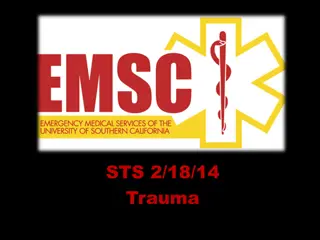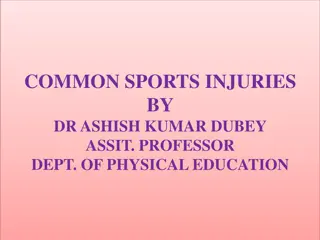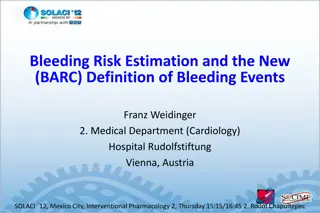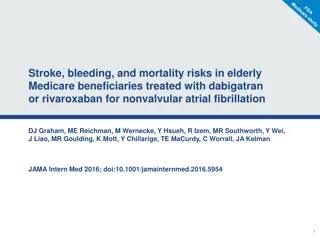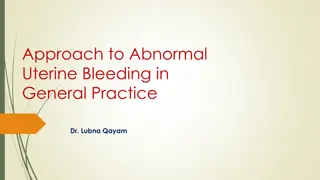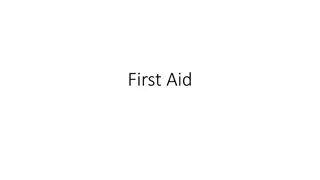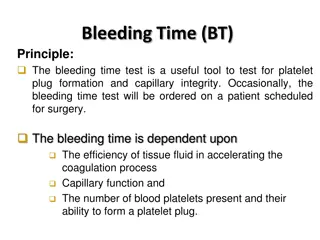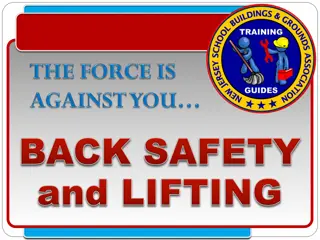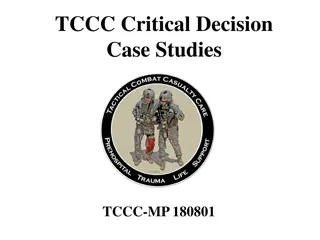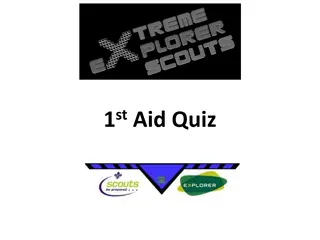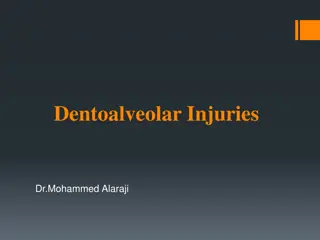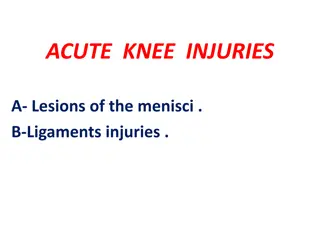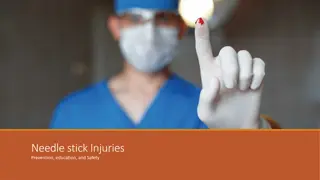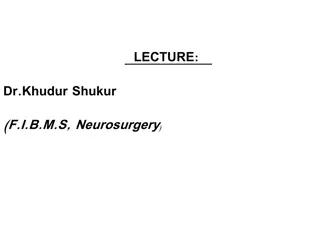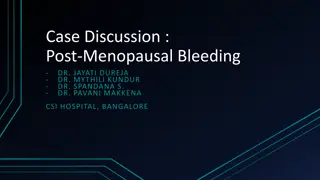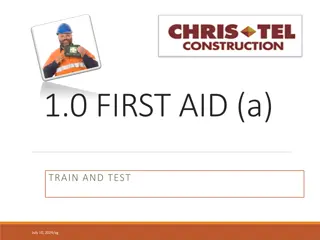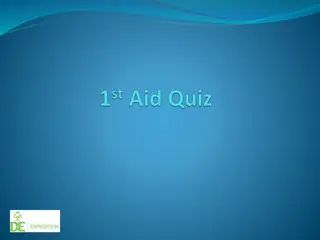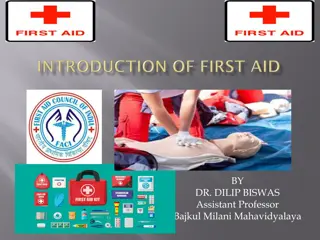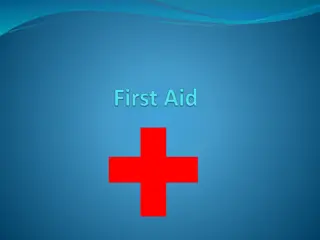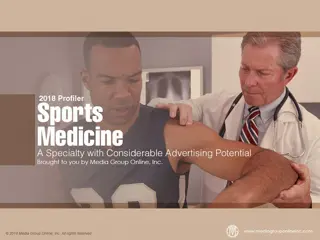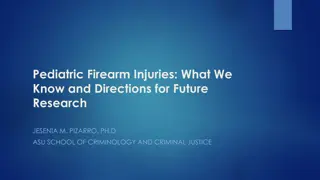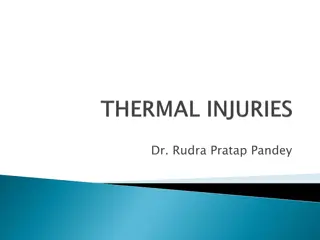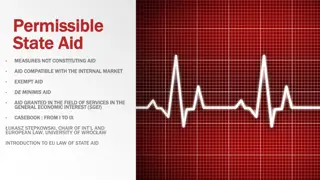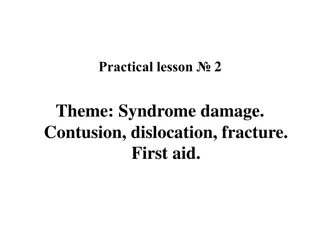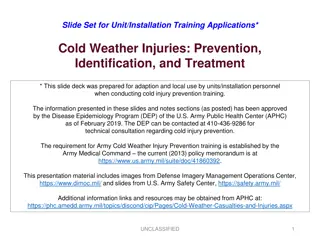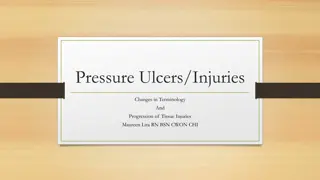First Aid for Controlling and Treating Bleeding and Injuries
Learn about how to handle and control bleeding, both internal and external, through first aid techniques including applying pressure bandages, using tourniquets, and recognizing signs of internal and external bleeding. Discover methods to assist victims and provide aid in various situations, such as dealing with simple bruises, identifying symptoms of fractures or sprains, and taking necessary steps to ensure safety and proper care until professional medical help arrives.
Download Presentation

Please find below an Image/Link to download the presentation.
The content on the website is provided AS IS for your information and personal use only. It may not be sold, licensed, or shared on other websites without obtaining consent from the author. Download presentation by click this link. If you encounter any issues during the download, it is possible that the publisher has removed the file from their server.
E N D
Presentation Transcript
Effects of Blood Loss 5%: with a loss of 15- 30% : (> 30% )
How the body controls bleeding Vascular : Platelets: Clotting:
Signs of External Bleeding: 3 Types:
What do you do after you determine the victim is bleeding internally? Have victim lie on his or her back. Call 9-1-1. Be alert for vomiting. Put a victim who vomits or becomes unresponsive in the recovery position. Keep the victim from becoming chilled or overheated. If the victim becomes unresponsive, monitor breathing and be ready to give CPR. More serious injury can cause deeper organs to bleed severely do not give the victim anything to eat or drink.
How do you apply a pressure bandage? Apply, if needed, over wound on extremity to maintain direct pressure. Use roller bandage to completely cover wound and maintain pressure. Make sure it doesn t cut off circulation. Check victim s fingers and toes for circulation.
What situations would you need tourniquet? There are multiple victims to care for. The victim has multiple injuries requiring care. The environment is unsafe and you need to evacuate the victim. You are unable to access the wound. May be needed to help control bleeding from an extremity not otherwise controlled.
First Aid: Simple Bruises Check for signs and symptoms of a fracture or sprain and give appropriate first aid. Put ice or cold pack on area. With arm or leg, wrap are a with elastic roller bandage. Keep the part raised to help reduce swelling.
First Aid: Internal Bleeding Have victim lie on his or her back. Call 9-1-1. Be alert for vomiting. Put a victim who vomits or becomes unresponsive in the recovery position. Keep the victim from becoming chilled or overheated. If the victim becomes unresponsive, monitor breathing and be ready to give CPR.
Hemostatic Dressings: A new, special kind of dressing to help control bleeding Promote rapid blood clotting Used if other methods cannot control bleeding
Chapter Opening Scenario You receive a call that a worker in the shipping department is injured. You grab the first aid kit and arrive at the scene within a minute. The injured woman is holding a bloody rag wrapped around her hand. She says she was using a box cutter, which slipped and made a gash in her hand. She unwraps the rag to show you, and you see a deep laceration that is still bleeding. What are the important steps you should take?
A coworker who was repairing a piece of equipment suddenly yells and grabs at his arm. You see blood flowing from between his fingers. You check him and see the blood is spurting from a severed artery. What do you do to try to stop the bleeding?
Even with your pressure on the wound, the bleeding continues through the dressing. What do you do next?
You are riding the bus home from work in the evening. As the bus stops where you will get off, an inebriated passenger in front of you staggers and trips on the last step and lands on the sidewalk. Not seeing what happened, the bus driver pulls away. The man rolls over, and you see that his shirt over his shoulder is rapidly becoming soaked with blood he apparently landed on a piece of broken glass. You have neither a cell phone or a first aid kit with you. What do you do?
You respond to a scene where a construction worker is lying unresponsive on his back. Another worker tells you that a few minutes ago the victim was struck in the abdomen by a concrete block that tumbled from on top of a wall. This other person unbuttoned the man s shirt to see if he was bleeding, and although his skin is abraded and bruised, there is no active external bleeding. What are the first actions you should take?
You carefully check his abdomen. It is hard and swollen, and his skin is cool and moist. Now what should you do?


